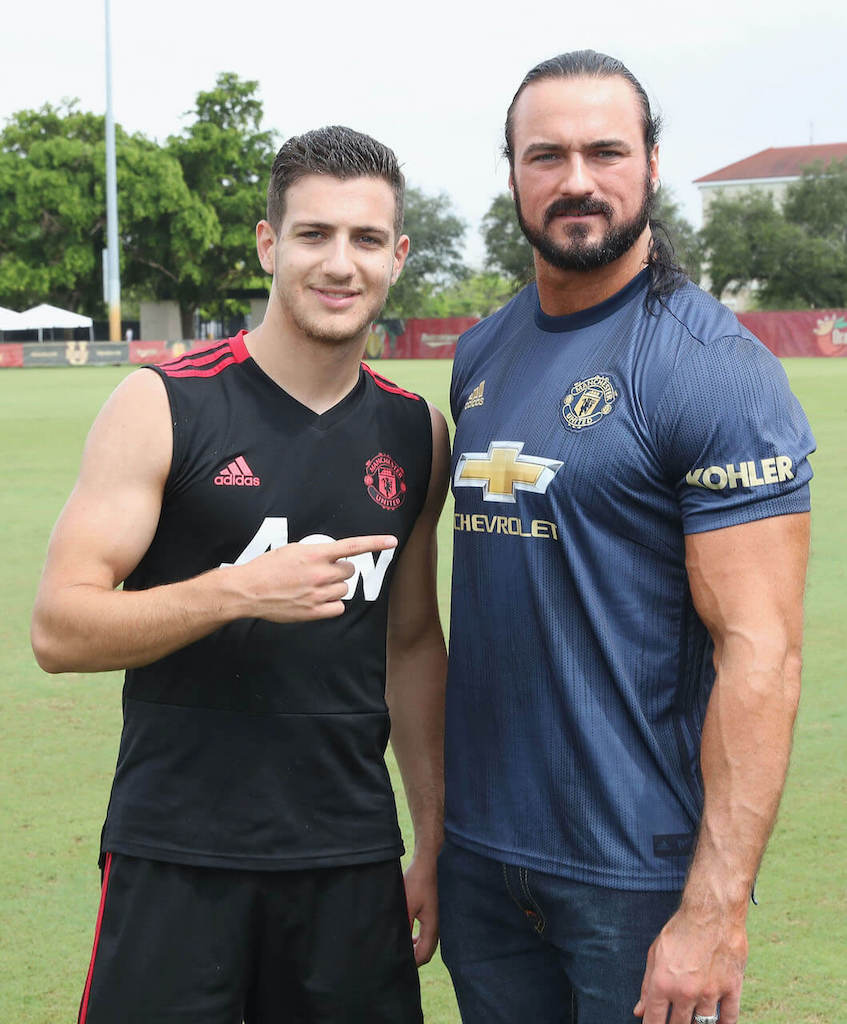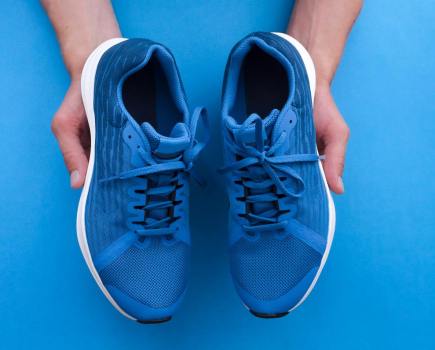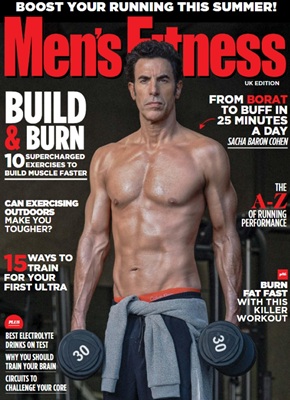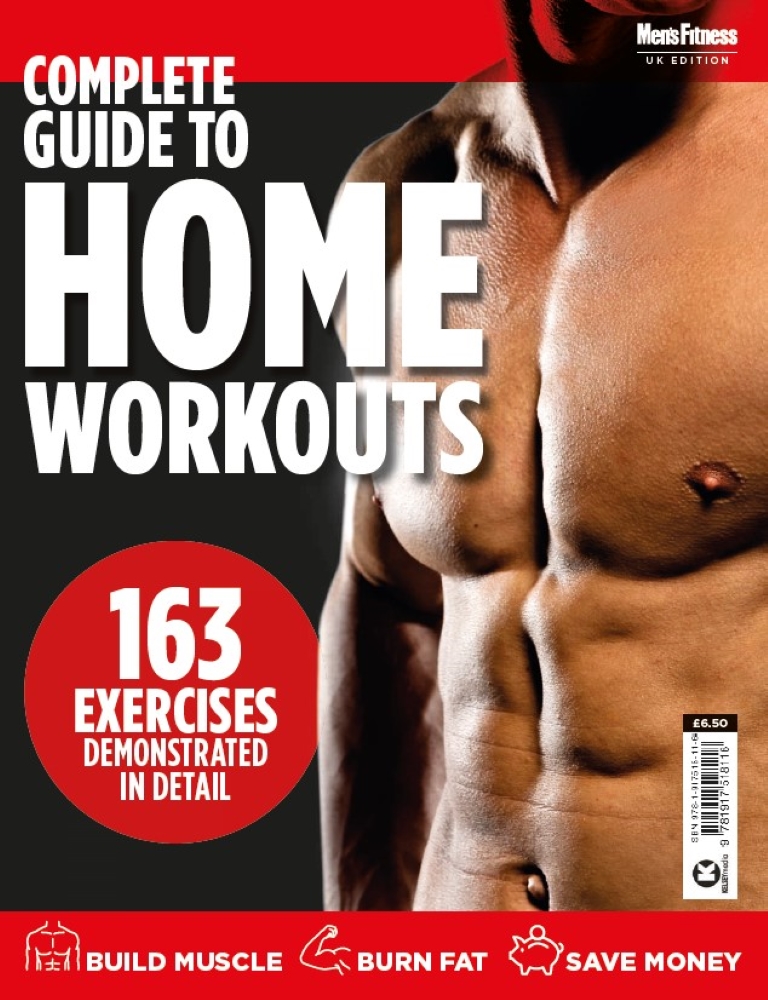From performing at Butlins to becoming king of the ring at Wrestlemania 36, Drew McIntyre is the 34-year-old Scotsman with WWE at his feet.

McIntyre is crowned the WWE Champ after defeating Brock Lesnar at Wrestlemania 36
He’s the British-born world champion that, if you’re in the UK, you may never have heard of. An athlete whose achievements are broadcast to over 800 million homes in a sport with over one billion social media followers worldwide.
He is Drew McIntyre, a professional wrestler from Ayr in Scotland, who earlier this year became the first ever British champion in the USA’s World Wrestling Entertainment’s (WWE) long history.
At 6ft 5” and over 250lb (113kg), McIntyre, dubbed the ‘Scottish Terminator’, began 2020 by winning WWE’s Royal Rumble – a 30-man tear-up from which a sole winner emerges. McIntyre then beat US wrestling legend and former UFC heavyweight champion Brock Lesnar to secure the WWE title.
“It’s genuinely unbelievable,” McIntyre tells MF. But success in this game is never a fluke.
REGIME
“For my weekly training I use an app that trainer Rob McIntyre (no relation) created. It’s one that I and a bunch of WWE superstars use. For four days a week it’s a plan of working with weights, but you can never predict what it’s going to be because every six weeks the programme changes dramatically.”
McIntyre is given leg drills to do one day, then chest exercises the next, back and triceps after that. “On the fourth day it can be a bunch of random surprise exercises,” adds McIntyre. “The following month I’ll find myself doing legs and deadlifts on the same day – that’s when Rob’s trying to kill me!”
The reps and intensity are switched up, too: “There’s a little example video of how to do the exercises. He creates a lot of drills himself to hit those little muscles, especially in the shoulders and rotator cuff – areas prone to injury in wrestling.”
McIntyre (Drew) explains that these drills are functional, focused on injury prevention and enabling wrestlers to maintain size and keep up the explosive power required for moves in the ring.
“A lot of the guys do CrossFit too,” he explains, “but I don’t understand how – wrestling is hard enough on the body without doing a million movements that require very specific form! I tried CrossFit, but it’s not for me.
“I don’t do so much sparring when I’m on the road full-time. We have a very busy schedule as there’s generally four shows a week. (Three are not televised, one is a live TV show). We also have an international tour which is two straight weeks, that happens twice a year, and there can be other times when we’re on the road for maybe two or three weeks at a time.
“I’ve developed a good stretching programme, which is vital for injury prevention, with different rehab moves as well as dynamic and static movements.”

Man mountain McIntyre stands next to Manchester United’s Diogo Dalot at the club’s pre-season training camp in 2018 | Photo: Getty Images
NUTRITION
After a severe injury, McIntyre overhauled his nutrition plan as part of his recovery. “That’s been the biggest difference maker, as anyone will see from how my physique has changed from about 2014 till now,” he explains. “I always worked out, I always worked hard, but I never followed any particular diet.
“But I broke my neck – two vertebrae – and the bones just needed to heal. My wife said to me, ‘You know, I think there’s more you could be doing.’ She suggested working on my physique more, having fewer nights out and looking into my nutrition.”
McIntyre found a meal-prep company to create individual dishes to suit his needs: “That was such a big help. Before then I’d have three meals a day but with no real thought behind what was in them. Now for breakfast usually it’s about eight eggs in some kind of omelette form, with some oatmeal, and maybe some fruit.
“Then I’ll eat three or four of the meal-prep meals a day. They’re about 50g of protein and between 20-30g carbs. When I’m home, I’ll have the prep meals plus a sit-down additional meal – maybe a Mexican dish or a pizza with my wife – which I can afford to do because I have a pretty quick metabolism.
“To maintain my size and my leanness it’s non-stop eating now. I could see the difference in my physique within a month of changing my meals. By continuing the training, cutting out the all the negatives and increasing my water intake the results have been unbelievable – it’s like I’ve found some secret supplement!”
MINDSET
The circus lifestyle of a WWE pro has its mental as well as physical drawbacks, but McIntyre accepts they’re all part of the career path he’s chosen.
Growing up in the UK, he first learned the ropes with independent wrestling tours from the age of 15, and got his break on the Butlin’s holiday camp circuit. “It was a useful experience,” he says. “It taught me to play for a crowd who weren’t necessarily into wrestling, but by the end of the night we’d done enough to have them on their feet cheering or booing.”
Having secured a master’s degree in criminology from Glasgow Caledonian University, he continued to wrestle in Europe and the USA before making his breakthrough in WWE at 22.
Along with the highs, there have been some falls along the way – including being dropped from the WWE rota. But he returned in 2017 and is now one of the biggest names in the sport.
“I used to try and impress everybody else,” says McIntyre. “I would let the pressure get to me get as well, but now if I can look myself in the mirror and know that I’m giving it my all – in the ring, in the gym and out of the ring – to better myself, hopefully the fans will see that, too.
“I hope they’ll be inspired, especially if they’ve followed my story and how many times I’ve been knocked down and come back.”
Follow Drew McIntyre @DMcIntyreWWE
Interview: Rob Kemp









